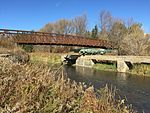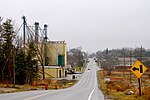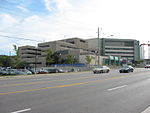Sharon Temple

The Sharon Temple is an open-air museum site, located in the village of Sharon, Ontario, that was in 1990 designated as a National Historic Site of Canada. It is composed of eight distinctive heritage buildings and dwellings, and houses 6,000 artifacts on a 1.8 ha. site. The building is made available for public use such as tours, concerts, weddings, and special occasions by its current owner, the Sharon Temple Museum Society.It was constructed between 1825 and 1832 by the "Children of Peace", a sect led by former Quaker David Willson on whose property it was built. Other restored buildings include David Willson's Study, which is a smaller architectural gem. The Ebenezer Doan house of 1819, constructed by the temple's master-builder and relocated from the former Doan family farm nearby, has been restored in an early garden setting. Also on site are the "cook house" where communal meals were created and served, the "drive shed' complete with period carriages, and another of David Willson's architectural curiosities – the round outhouse. The Ontario Heritage Trust has a public easement to ensure its preservation meets conservation standards.
Excerpt from the Wikipedia article Sharon Temple (License: CC BY-SA 3.0, Authors, Images).Sharon Temple
Leslie Street, East Gwillimbury
Geographical coordinates (GPS) Address External links Nearby Places Show on map
Geographical coordinates (GPS)
| Latitude | Longitude |
|---|---|
| N 44.101332 ° | E -79.441874 ° |
Address
Sharon Temple
Leslie Street 18974
L9N 0P6 East Gwillimbury
Ontario, Canada
Open on Google Maps






